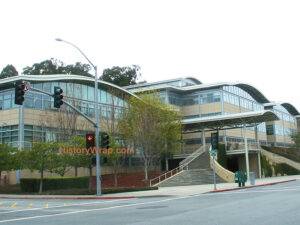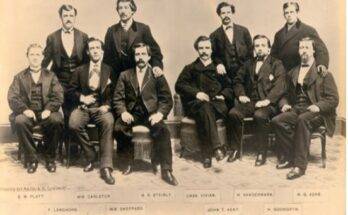YouTube History
Its headquarters in San Bruno, California, YouTube is an American social media and Internet video-sharing company. On February 14, 2005, Steve Chen, Chad Hurley, and Jawed Karim officially debuted it. After Google Search, it is the second most frequented website and is presently owned by Google. More than 2.5 billion people use YouTube each month and watch one billion hours of video daily. Over 500 hours of content were uploaded every minute of video as of May 2019.
In May 2005, when the site first went up on a limited (“beta”) basis, it started receiving about 30,000 visits daily. On December 15, 2005, YouTube made its formal debut, offering more than two million video views daily. That number has risen to more than 25 million views by January 2006. In March 2006, there were more than 25 million videos on the website, and more than 20,000 new videos were added each day. YouTube served more than 100 million videos daily by the summer of 2006, and the rate of video uploads to the platform showed no signs of slowing down.
The massive increase in YouTube traffic brought about a unique set of issues. The business was required to keep adding computer hardware and broadband Internet connections. Additionally, because numerous media businesses found that some of the films uploaded to YouTube contained copyrighted content, YouTube was compelled to set aside additional money for future legal actions. YouTube started looking for purchases after having little luck monetizing the website or limiting its rising expenditures.
A video service called Google Video was introduced by the American search engine business Google Inc. in 2005. Still, due to low traffic, Google decided to buy YouTube in November 2006 for $1.65 billion in shares. But Google kept running YouTube as it had been, not combining the websites. Google struck agreements with several entertainment businesses that would let copyrighted video content appear on YouTube and permit users to include specific copyrighted songs in their videos to lessen the danger of copyright-infringement lawsuits. It also consented to the removal from YouTube of tens of thousands of videos with copyright issues. Google and Metro-Goldwyn-Mayer, Inc. (MGM) arranged in November 2008 for Google to stream sure of the studio’s full-length films.
A Hong Kong version was launched. It was revealed on October 17, 2007. Taiwan would be YouTube’s next target, according to Steve Chen at the time. Because the Taiwanese flag was censored, YouTube was restricted from mainland China starting on October 18.
YouTube URLs were sent to Baidu, the country’s search engine. On October 31, it was subsequently unblocked. The YouTube interface proposes a local version depending on the user’s IP address. Because of copyright limitations or unsuitable material, the notification “This video is not accessible in your country” may occasionally show. The YouTube website’s interface is accessible in 76 languages, including Amharic, Albanian, Armenian, Burmese, Kyrgyz, and Mongolian.
Between 2008 and 2010, Turkey’s access to YouTube was prohibited due to controversies surrounding the publication of films deemed harmful to Mustafa Kemal Atatürk and certain materials considered offensive to Muslims. A Turkish-language YouTube was made available in October 2012 under the URL youtube.com.tr. Turkish law’s content restrictions apply to the local version. Premium music videos were prohibited for YouTube viewers in the United Kingdom in March 2009 due to a disagreement between YouTube and the British body for collecting royalties on music, PRS for Music. The big record labels’ videos were taken down when an agreement on a license contract could not be reached. September 2009 saw the resolution of the conflict. A similar argument resulted in the dismantling of the in April 2009.

The San Bruno offices of YouTube from 2006 through 2010

Early headquarters of YouTube in San Mateo
Profit, advertising, and business strategy Profits, advertising, and business strategy
Before being acquired by Google, YouTube stated that its revenue model relied on advertisements and brought in $15 million each month.
YouTube’s operating costs were not broken down in depth by Google, and the company’s 2007 revenue was described as “not meaningful” in a regulatory filing.
A Forbes magazine story from June 2008, which noted an increase in advertising revenues, estimated the 2008 income at $200 million.
According to some industry analysts, YouTube’s operating expenses (particularly the needed network bandwidth) might reach $5 to $6 million per month. This has fueled claims that the firm, like many Internet companies, lacks a successfully executed business plan. On the website, advertisements first appeared in March 2006. YouTube began utilizing Google AdSense in April. After that, YouTube ceased using AdSense, but it is now back in some localized areas.
The primary method used by YouTube to generate income is advertising. Scientific research has also been done on this issue. In their book Wikinomics, Don Tapscott and Anthony D. Williams make the case that YouTube is an example of an economy founded on widespread collaboration and the Internet.
“Regardless of whether your company is more like Boeing or P&G, or YouTube or Flickr, there are massive talent pools outside your organization that you can access with the correct strategy. Companies that use these models can rewrite the laws of competition and bring about significant changes in their sectors.” 270 “Traditional media outlets will not develop new revenue models for available material; instead, Google, Yahoo, and YouTube will. Because the publishing incumbents’ legacies do not affect this new generation of businesses, they can quickly adapt to client demands. More importantly, they recognize that if they can offer appealing spaces for individuals to create communities centered around sharing and remixing content, they won’t necessarily need to control the amount and future of bits. Free material is only the bait on which they pile advertising and premium service income “.
According to Tapscott and Williams, new media firms must determine how to monetize peer-produced content. The concepts of “openness, peering, sharing, and acting worldwide” would serve as the foundation for the new Internet economy, which they refer to as “Wikinomics.” Businesses might apply these guidelines to employ Web 2.0 apps profitably: “Companies may collaborate with their consumers to design and construct goods, and in some circumstances, customers can provide the bulk of the value.” 289sq According to Tapscott and Williams, the result will be an economic democracy.
Other opinions [by whom?] in the debate concur with Tapscott and Williams that it is based more and more on utilizing open source content, networking, sharing, and peering. Still, they contend that the outcome is not an economic democracy but a subtle form and deepening of exploitation, in which labor costs are decreased by Internet-based global outsourcing.
Christian Fuchs, for example, adopted the second point of view in his book “Internet and Society.” According to him, YouTube illustrates a business strategy that relies on fusing the gift with the commodity. While the second is profitable, the first is free. This business approach is innovative in that it combines two concepts that, at first glance, appear to be unrelated: the gift and the commodity. YouTube would provide users with free access, and the more users it has, the more money it may generate, as it could theoretically boost ad prices and attract more advertisers. The audience that YouTube acquires through unrestricted access would be sold to advertisers.
“Commodified Internet spaces are always profit-oriented, but the products they offer are not always exchange-value and market-oriented; in some cases (such as Google, Yahoo, MySpace, YouTube, Netscape), free goods or platforms are given away as gifts to increase user numbers so that high advertising rates can be charged to achieve profit.”
According to RampRate, a San Francisco-based IT consulting firm. YouTube was far closer to profitability in June 2009 than it had been in earlier assessments, such as the April 2009 investment bank Credit Suisse prediction that YouTube would lose up to $470 million in 2009. RampRate’s analysis estimated that amount to be no more than $174 million.
YouTube started a test initiative in May 2013 to allow select content creators to charge $0.99 or more per month for specific channels, although the vast bulk of its videos would still be accessible for free.
FAQ’S




